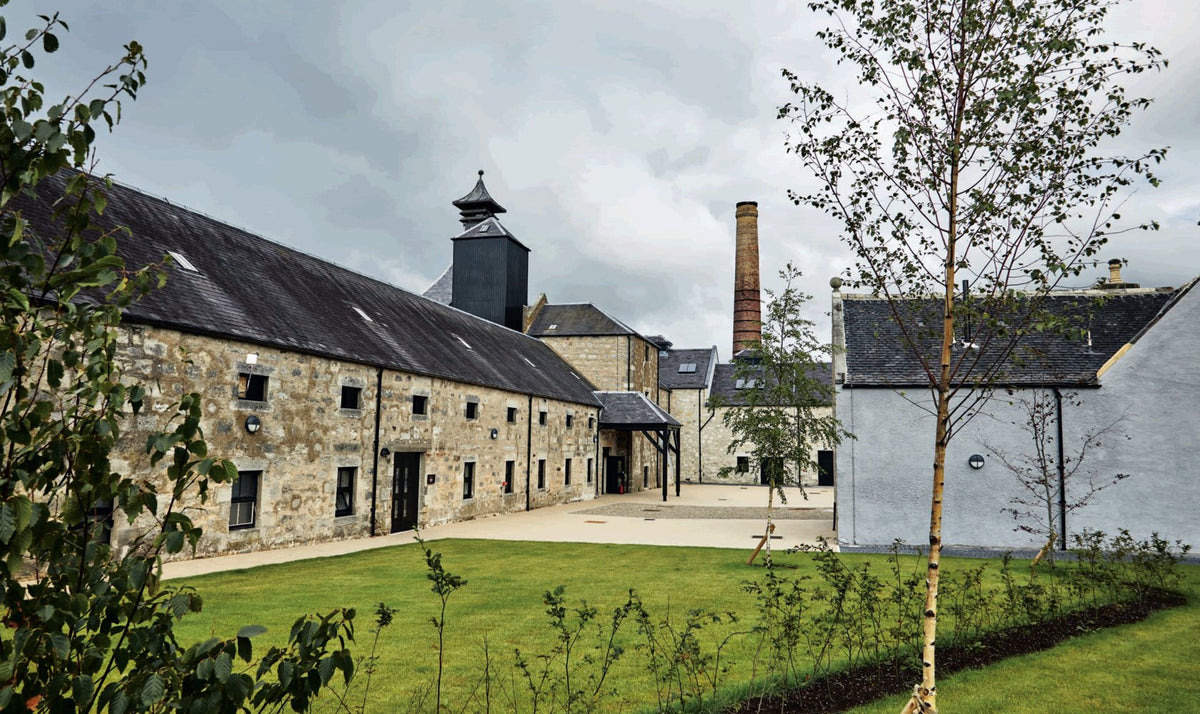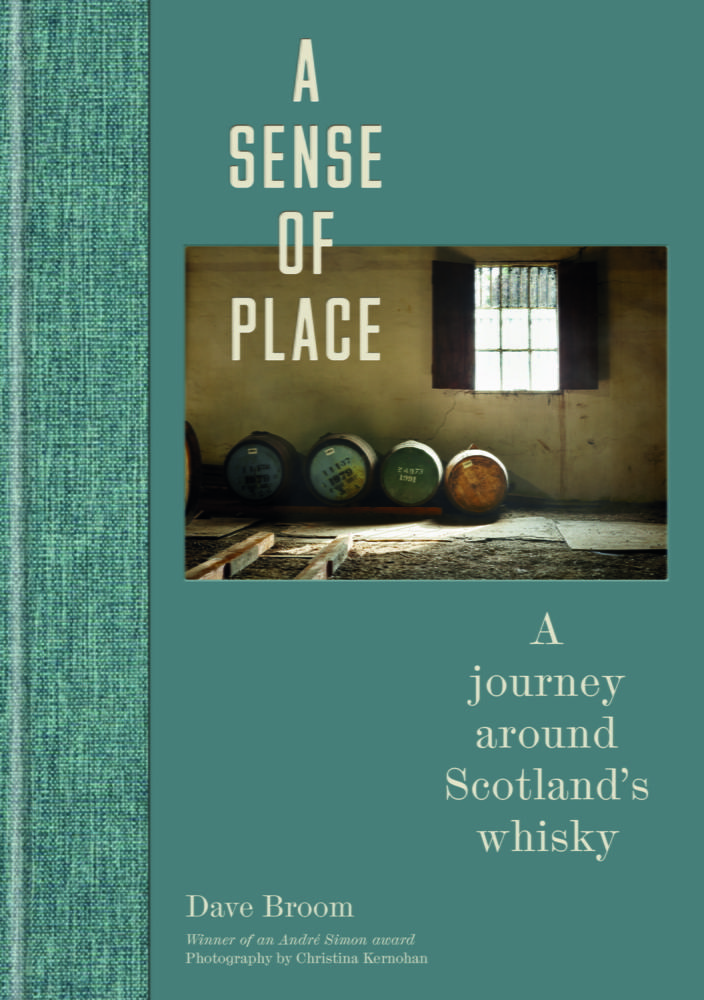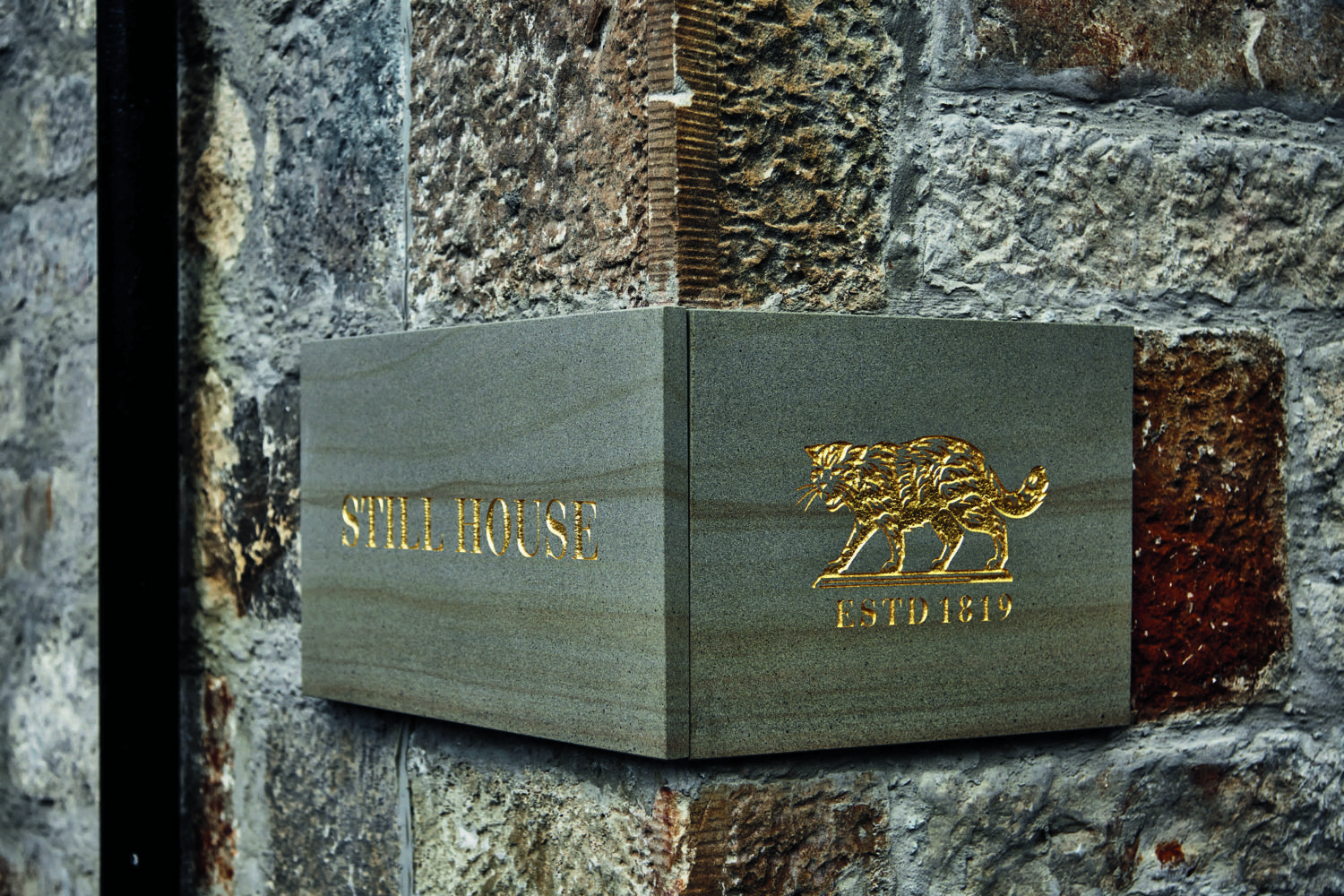
The Rise, Fall & Rebirth of One of Scotland’s Rarest Single Malts
|
|
Time to read 10 min
|
|
Time to read 10 min
For much of the twentieth century, Brora’s distillery, like every other across Scotland, was at the service of blends. By the 1960s, its Victorian equipment was creaking and in 1968, with blends booming in North America, it was replaced by a younger, slicker model, built a little further up the hill. Think of it as Scotch’s mid-life crisis. The new distillery even took the old one’s name: Clynelish.
Almost immediately, however, drought on Islay brought the old place back into production, as the blenders required a quick substitute to make heavily peated spirit. To avoid confusion, it was renamed Brora. Then, in 1983, as demand for Scotch crashed, like many other smaller, old-fashioned distilleries it was discarded once more. Its quiet life in service was over. Shuttered, its innards cannibalized, Brora sat silent.
By 2000, however, a cult had formed around it. Maybe because, like other silenced sites such as Ardbeg and Port Ellen, it was smoky, and therefore in line with the tastes of the new wave of malt lovers. It was they–foremost among them the French writer Serge Valentin–who preserved Brora’s reputation, giving hope that one day it might reopen.
Maybe the fact it remained a physical entity allowed the question to be asked, “what if?” Maybe it went even deeper. Could it be that Brora’s outsider distillery character chimed with the personality of a certain type of iconoclastic whisky lover?
Let me explain “outsider.” The world’s most famous distilleries conform to an ideal standard of beauty. They are poised, sleek, elegant. Brora whisky is oily, waxy, oxidative. It doesn’t play by the same rules, and it’s this teetering on the edge of orthodoxy that makes it compelling.
But it was disappearing, sip by sip. Then, in 2017, news came that it was to be resurrected, which is why we’re standing in smirry rain in front of its new gates, meeting brand-new home host Andy Flatt and manager Stewart Bowman (who has since left to become manager at Arran). Both are fully tweeded up. Stewart’s long beard is tied in a knot, Andy’s neatly combed. Not for the first time, I feel underdressed and ill-groomed.
Any time I’d been to Clynelish, I’d sneaked down to the ruined site with its crumbling walls and moss-covered stones, peering through grimy windows at the stills and wondering. Now its pale limestone walls gleam, the gravel is raked, the lights are on, the distillery bell rings once more.
The reason the stills remained was nothing to do with secret plans. “Without them the building would have fallen down,” says Stewart. “To get them out they’d either have had to chop them up, or take the roof off, in which case the building would have collapsed.” It was dismantled stone by stone, foundations dug, a new steel frame put in place, then rebuilt. It is a remarkable achievement.
Stewart’s father was the last excise officer in Sutherland. According to Stewart, an old weekly production ledger his father had put in the loft records that “Brora distillery closed for an indefinite silent season, March 1983.” On 5 March 2021, Stewart started production once more.
We’ve been joined by Kevin Innes, who started working at the distillery in 1977, aged 17. As the day progresses, it becomes clear how important his memories have been in making sense of the puzzle of how to recreate the idiosyncratic waxy and fruity Brora style.
It’s easy to fixate on a single element as being key to a distillery’s character, forgetting that distilling is a complex interplay between a multitude of different constituent parts. Here, clear wort from the mash tun is the first stage in creating Brora’s DNA. This significantly reduces any nutty characters in the spirit. Then comes a 115-hour fermentation in wooden washbacks. Keeping the fermented wash in these after all the sugar has turned to alcohol triggers lactobacilli (LAB). Reacting with the higher acidity in the wash, they create fruity esters.
The longer the ferment, the fruitier things become. Stewart and I geek out over a recent paper, which showed that each distillery had its own individual colony of lactobacilli. “Changing the plant or over-cleaning will hurt that colony,” he says. “You have to have the right conditions. It’s a living system.”
In the stillroom we’re dwarfed by the pair of massive dull copper stills whose bellies seem to pin us back as they soar upwards, like pipes running out to the worm tubs. Being Brora, there’s another quirk. “One washback gives us two wash-still runs, which then give 1.4 spirit-still runs,” says Stewart, not knowing that trying to explain maths to someone with dyscalculia is a tough gig.
“One week we’ll do eight spirit-still runs, the week after we will do nine.” He grins, reading my bafflement, anticipating the next question.
“We don’t really know what it does, but it’s what they did back in the day, so we’re fully committed to it.” He looks up. A slight sigh. “Aye,” he says, “they’re bonny stills.”
“I found a rota book from 1966,” says Andy. “In it, it said that on March 11 ‘the holy psalm book was produced and we sung a whole bunch of psalms, but the wash didn’t come off any quicker.’ Imagine all the workers singing psalms around the wash still.”
Psalm-singing might be the secret ingredient to the waxy signatures of Clynelish and Brora. For me, the former’s is more textural, like candle wax, while Brora’s is thicker but oilier. Both are meant to result from the build up of a greasy deposit in the foreshots and feints receiver. Without this gunk, the waxiness goes.
“It’s not just the gunk, though,” says Stewart. “It’s everything before that – clear wort, lower gravities, long ferments. A lot of analysis was done on the gunk to try and quantify where it’s coming from, what the compounds are, but there are so many variables. That to me is where the artistic element comes in.”
“The other thing is the terroir, which is something not defined and is a really interesting area. It’s back to that LAB paper. There’s an absolute link between location, water, environment and this waxy character. They tried it at Dailuaine, but it never reached the same intensity. Aberfeldy and Craigellachie were waxy, but they were different as well.”
I look to Kevin for help. He smiles. “Can I tell you how it’s done? No, but I can smell a washback and tell you it’s there. It starts earlier than just in the still-house.”
To ensure the gunk sticks, they’ve scoured the inside of the new steel tanks. We look in, and there’s stuff starting to form on the sides.
Later, when the others are having tea, Kevin winks at me. “You ever seen the gunk at Clynelish? Come on.” We head up the hill where (with permission and gas monitor) we open one of the tanks. It’s slathered with a thick gray black coating, soft as silk and weirdly beautiful.
We chat on the way back. Who taught you? “All the old boys here,” he says, starting to list the names: Donald Cameron, Duncan Mathieson, Hoopy the cooper. “They’d been working here all their lives, 40, 50 years.” He was learning from men who had worked at Brora since the late 1920s. Whisky is about continuity, passing knowledge on.
And the ways have changed? “Stewart has the degrees. I have my nose and eyes. I can get you waxy, but I’ll do it my way and it’ll be different from the way they do it. I’m an awfa’ tweaker. I can tell if it’s no’ right, and that can only come from time.”
The old guys he talked about would have said the same about their forebears. Naming the people is for me more of a link to the past than the beautiful restoration and the reception rooms for Brora’s new high-net-worth clients.
Back inside, Andy brings out more ledgers. “Brora was selling 90 percent of its production privately at the end of the nineteenth century,” he explains. “Remember that the railway arrived here in 1870. It brought in tourists, salmon could be sent overnight to London–and it helped distribute the whisky. The distillery is integral to the village’s history, and the village is integral to the distillery’s.”
What does its return mean to the community?
“It’s huge,” says Kevin. “Huge. Even when this was called Clynelish everybody called it ‘the Brora distillery.’ Having Clynelish is amazing, but not to lose the history of Brora is wonderful.”
“We need to open the gates and get the people in,” adds Stewart. “Have community days, get in the old guys, my Dad, to tell folks the amazing stories. They helped so much.”
Was there much rivalry when both distilleries were operating?
“The old boys were loyal to here,” says Kevin. “Going up the hill was seen as promotion but they stayed here. Clynelish was meant to be a replica, but they’re not the same spirit.”
Given you worked at both, what are the differences?
“Brora was a better whisky!”
We’re now in one of the old warehouses. Dunnage style, earth floors, low stacks of casks. The smell of damp, and heady fumes. “The burn’s running alongside, you see,” says Kevin. “If you were working here, your feet would be in mud as thick as treacle. The dampness made for better whisky.”
Andy pours samples of the distillery-exclusive 39 year old. It’s elegant, fruity, with touches of citrus, a mineral edge, stone fruit and foam bananas. All the way through is that weird oiliness which says “Brora.”
Brora has been heavily smoked, lightly peaty or unpeated: variations on a theme. The oily pulse it gave to blends meant it was aged in multiple-use casks, with little flavor coming from the oak. After four decades, the air has had more influence, the oils have concentrated, the fruits drifted towards the tropics, dampness seeping in.
Flavors and textures are pushed beyond the safe and pretty into areas that bear no resemblance to what whisky “should” taste like.
The limits of language are revealed. What do these lists of words mean? Just give in to the sensation.
In Highland River, Kenn and his friend Beel become intoxicated by an “inexplicable scent of honey in the fitful June air. They got it, they lost it…The scent was warmed by the sun; it had a rare entanglement.”
That “entanglement” is an aspect of place. It is the magic in the glass. Words don’t matter, the technical details fade away. It is just you, memory and the liquid. The response is visceral. It has you.
“Keep silent and still, and watch what happens,” Gunn wrote in his essay The Flash. “The real point of the experience is that one comes upon oneself…the experience is incredibly refreshing, cool as birch-scented air, and full of wonder.”
But although language falters, we still try to pin flavors down, just as Gunn did. “I do not know the description of the taste of an Orange Pippin has ever been caught in a phrase,” he wrote in his autobiography The Atom of Delight, “but we had our phrase for hazelnut…and it was ‘whisky taste.’”
“The crack…the mash, the mashing of the mash until with the help of a generous spittle the whole attains that degree of liquidity which frees to the full the ultimate flavors the quintessence of whisky taste.”
He’s also linking “whisky taste” with the nine hazel trees of Celtic legend, which surrounded the well of knowledge. When the nuts fell into the pool, the salmon of wisdom ate them. Discovering the pool, the hero Fionn MacCaumhaill ate the salmon, thereby gaining wisdom and the knowledge of poetry. Whisky taste at the heart of it all.
Brora’s taste speaks of all that, but also of people and that passing of things down, an old distiller learning through his senses, of Stewart and his father, and this idea of continuity. There is also the accepting of a challenge, the shades of these old men smiling, saying “OK, you try and do what we did.” Finding the pieces, making assumptions, testing theories.
I think back to Nick Card on Orkney. Here, the pieces are hidden in lofts and people’s minds, in tanks, casks and glasses. Brora is an exercise in memory, but it can’t be in thrall to it, because you can only make today what you make today.
At the opening, Diageo’s then master blender Jim Beveridge said, “We will recreate the system, put everything back, and it will be what it will be, and it will be Brora.” It almost brought Stewart to tears.
There’s a subtext here that, as with all distilleries, once things are set in motion, at some point flavors will warp and shift and the distillery will decide into what configuration they fall.
The Brora we think we know is only a tiny corner of the picture.
We are assessing a distillery through ancient stock. Brora remains elusive because we don’t know what it tasted like as new-make spirit, or as a young whisky. It’s impossible to make a 39-year-old whisky, all you can do is set it up and hope. “It will be Brora,” doesn’t mean it will be the same as it was. It will be what it will become.
We’re staying in an Airbnb that night, in a row of old railwaymen’s cottages near to Lower Brora. We head past the small harbor, built for the coal boats, to the Sutherland Arms for a meal, but scarper, unable to cope with two drunken couples shouting at maximum volume about problematic childbirths. Thankfully, there’s Sid’s Spice, a truly great curry house (the leftover tamarind chicken went well with square slice and mushroom for breakfast).
We pour a couple of drams of Clynelish. Christina [Kernohan], smitten by Brora’s weirdness, had earlier asked what the starting price was but, unsurprisingly, declined to make a purchase when Andy told her: £8,500.
The fact that Brora’s currently a plaything for those who can throw a case into the boot of their Ferrari is an inevitability, given the rise of the luxury market and the low level of mature stock. This will, hopefully, change in a decade’s time when the new whisky is available. In the interim, those wildcat gates should be opened to all who simply want to see this remarkable and praiseworthy resurrection. After all, it is “the Brora distillery.” It belongs to the people.
A Sense of Place: A Journey around Scotland’s Whisky by Dave Broom, Mitchell Beazley 2022
* Cover photo courtesy Christina Kernohan


